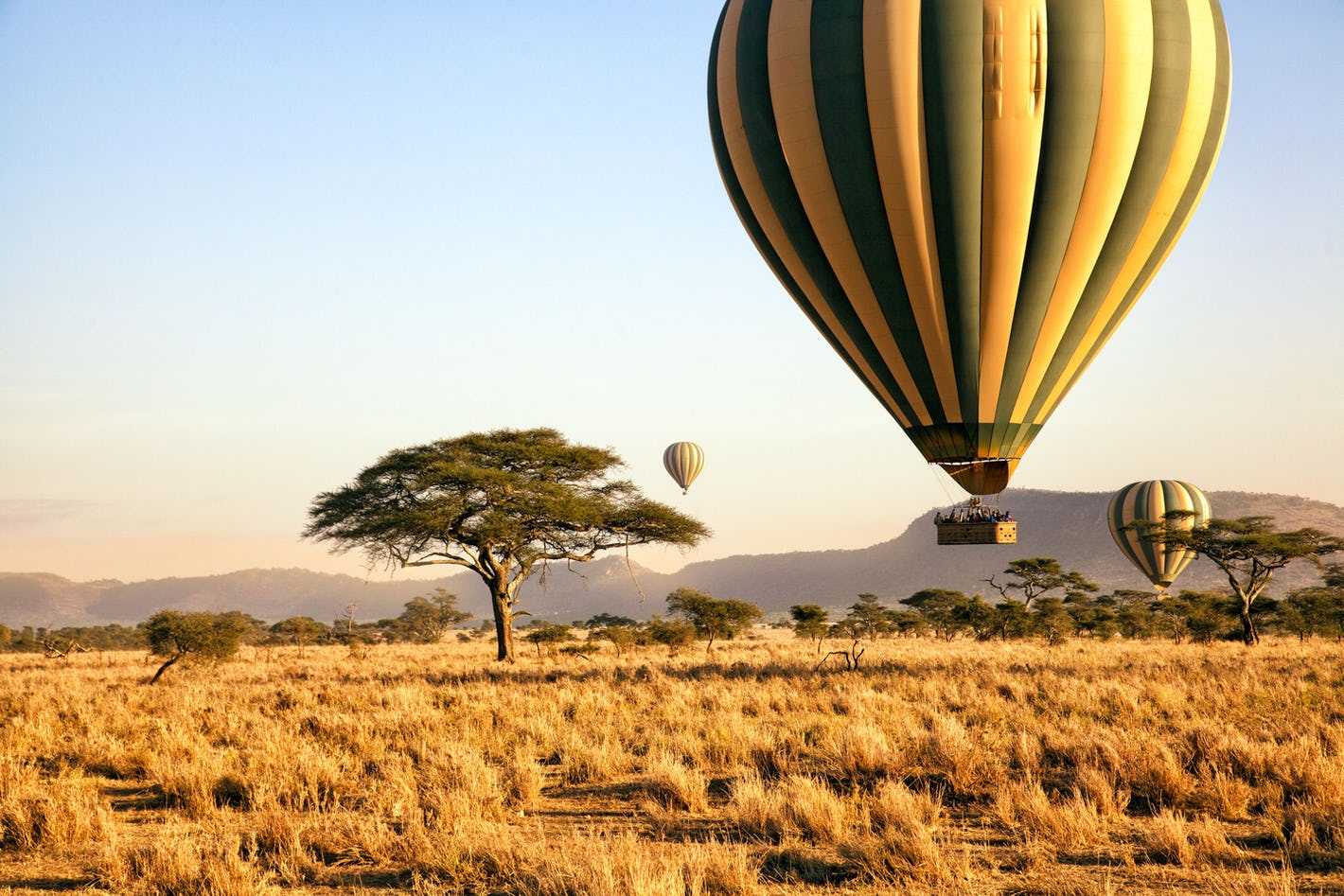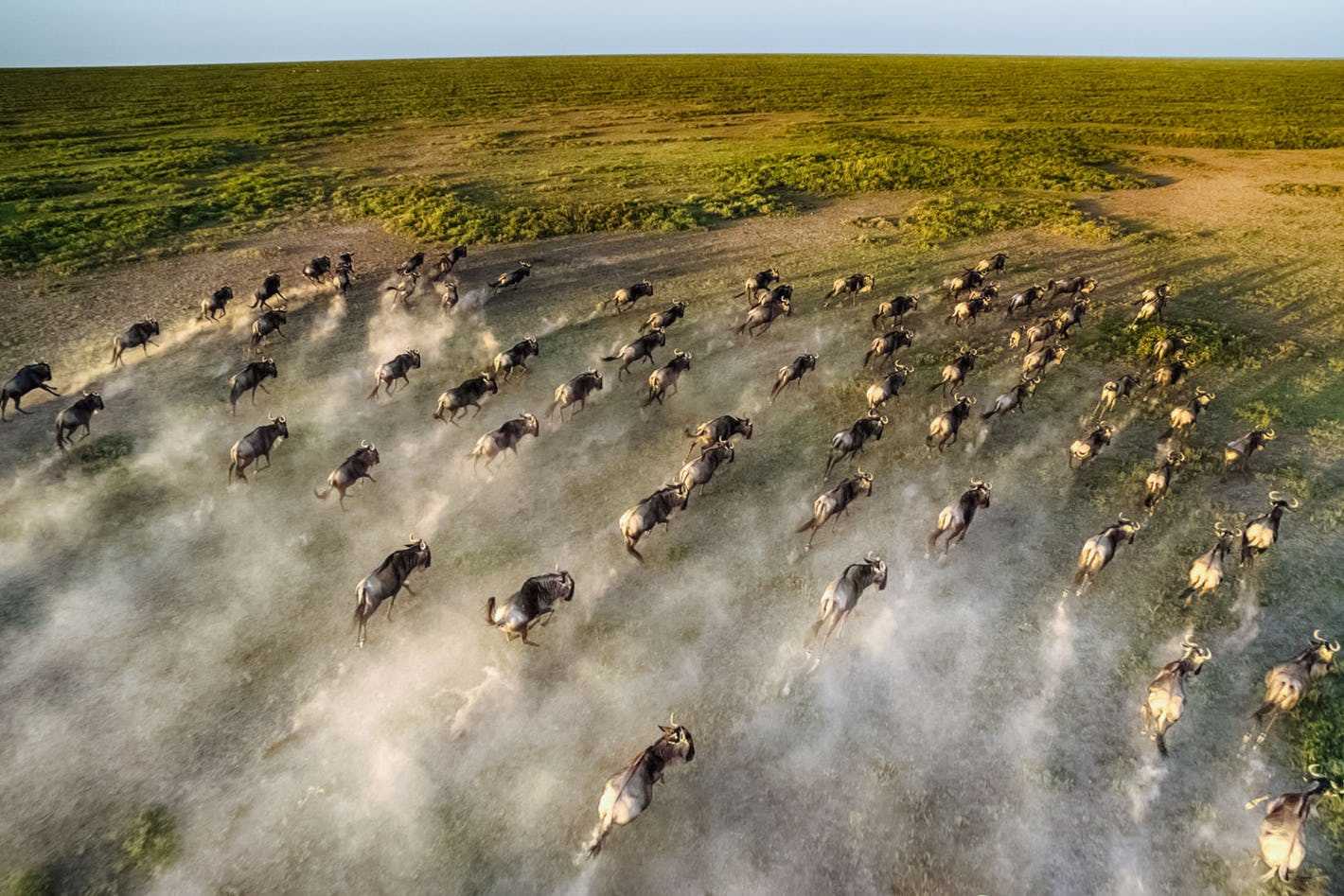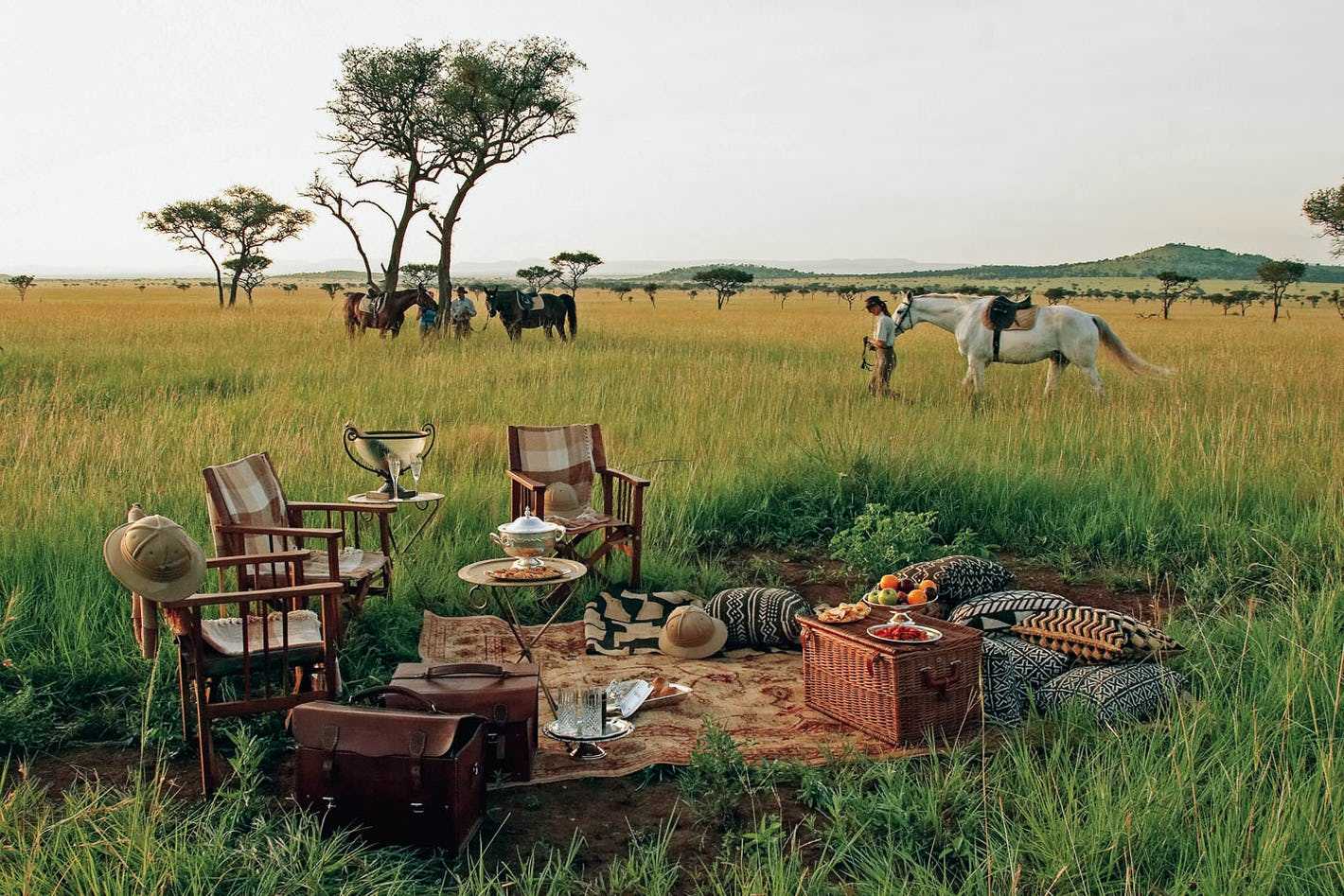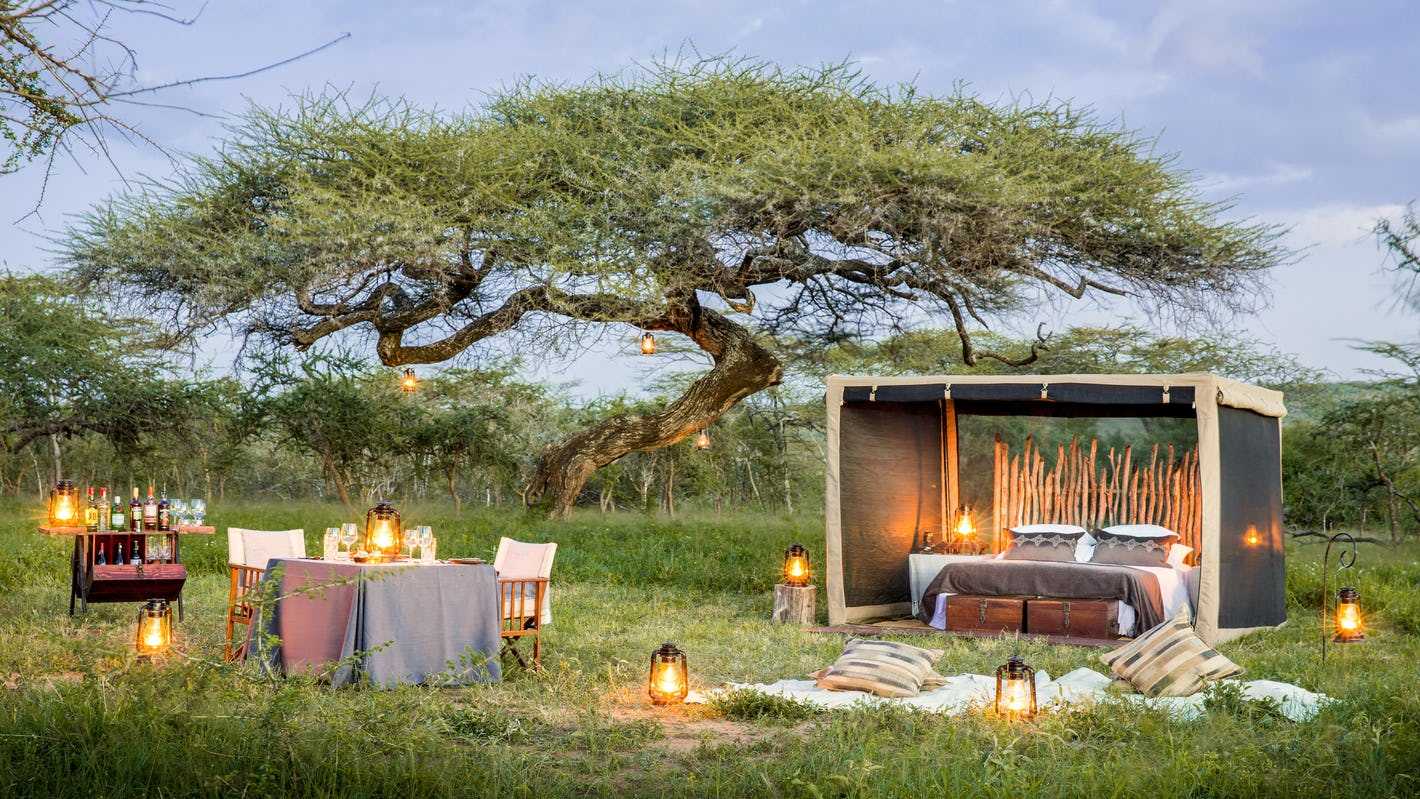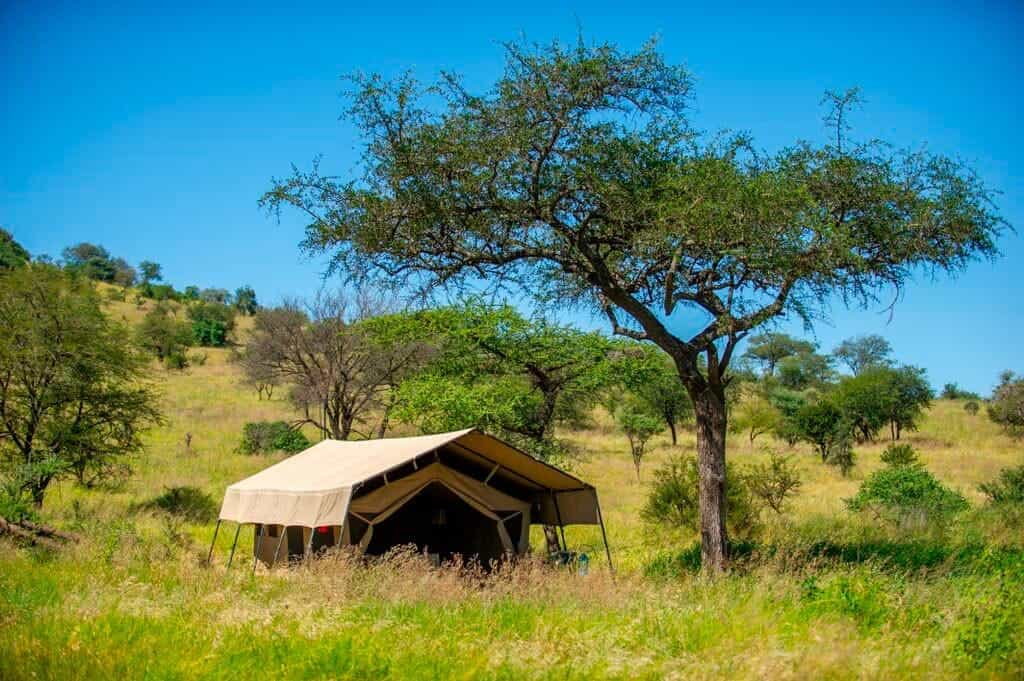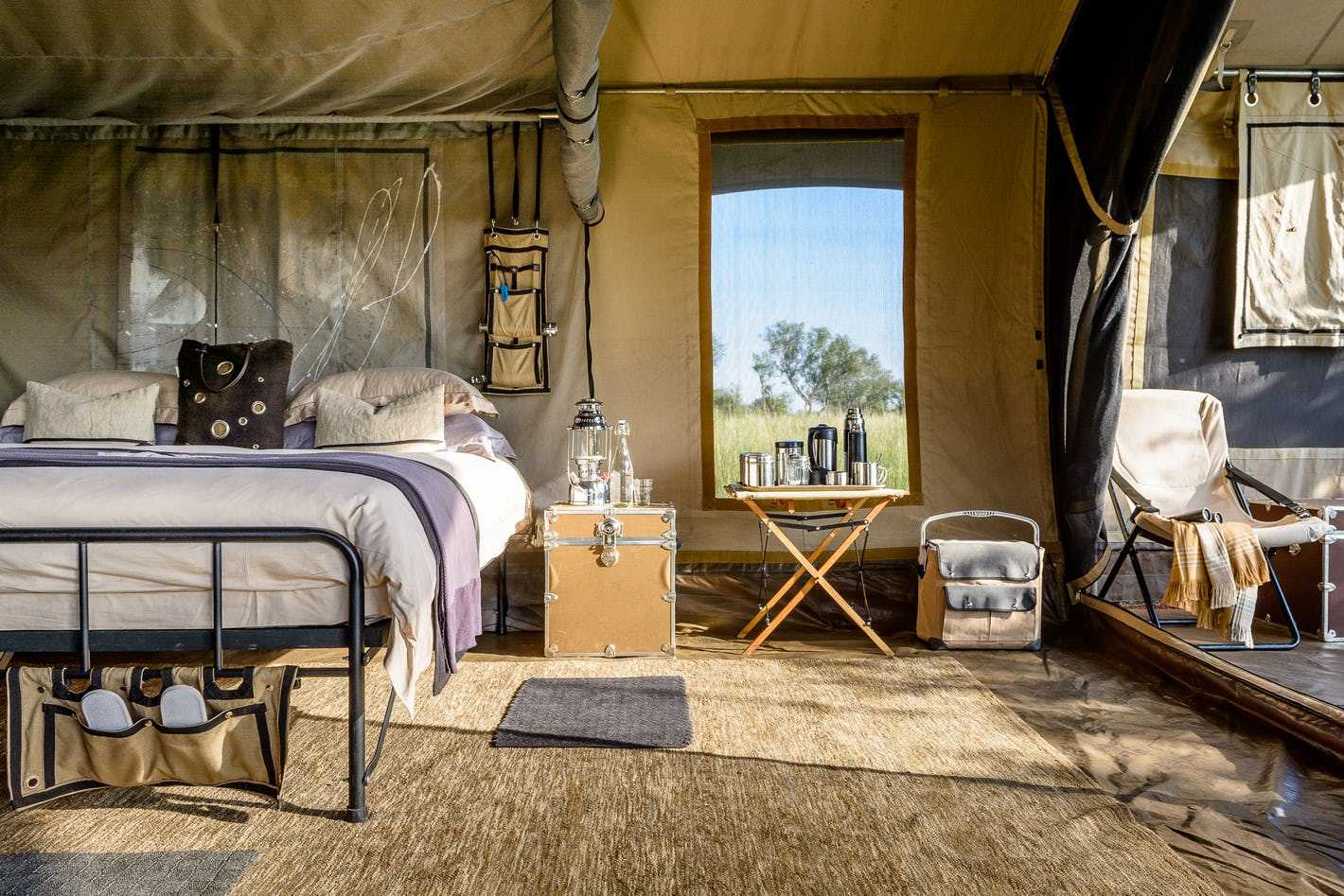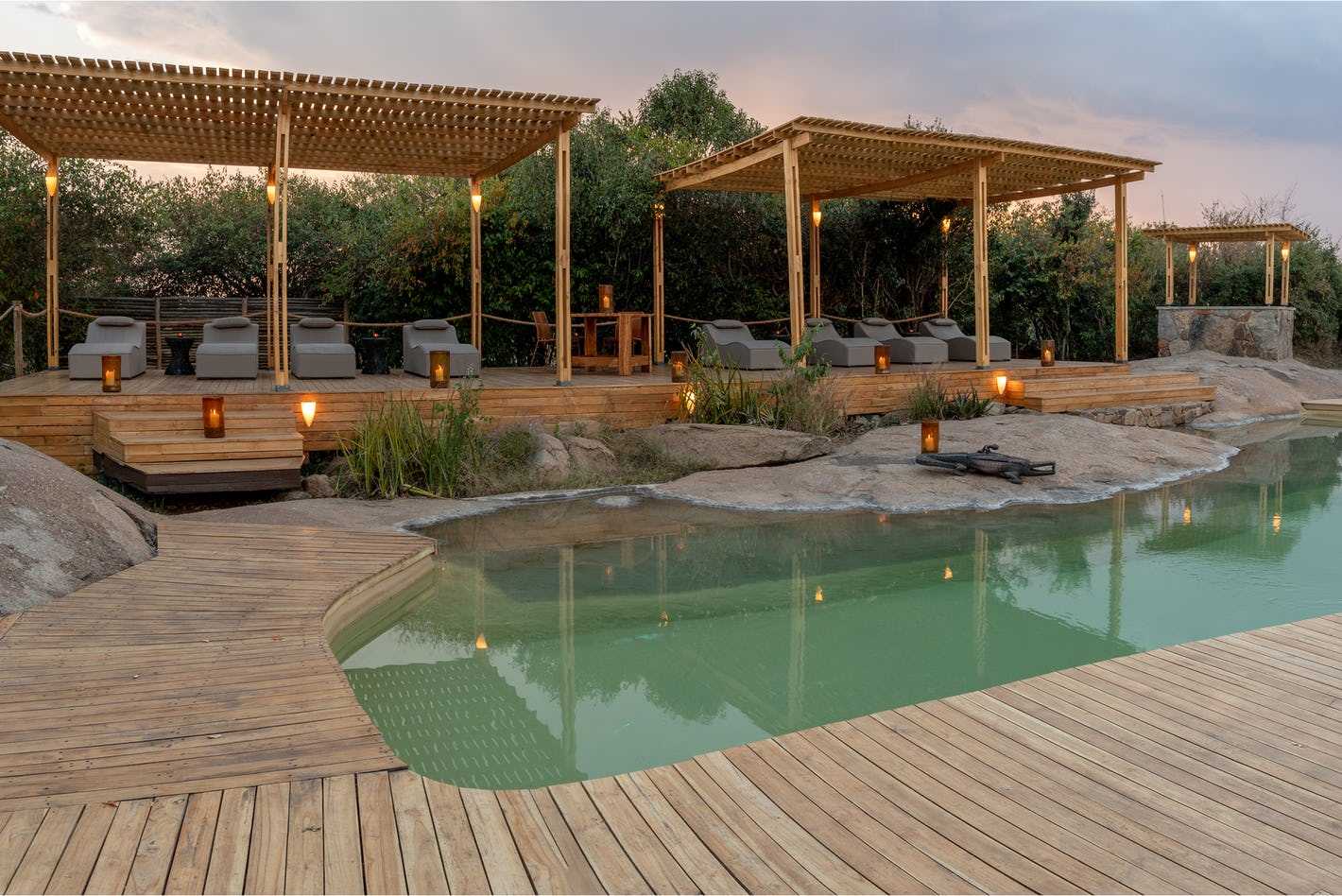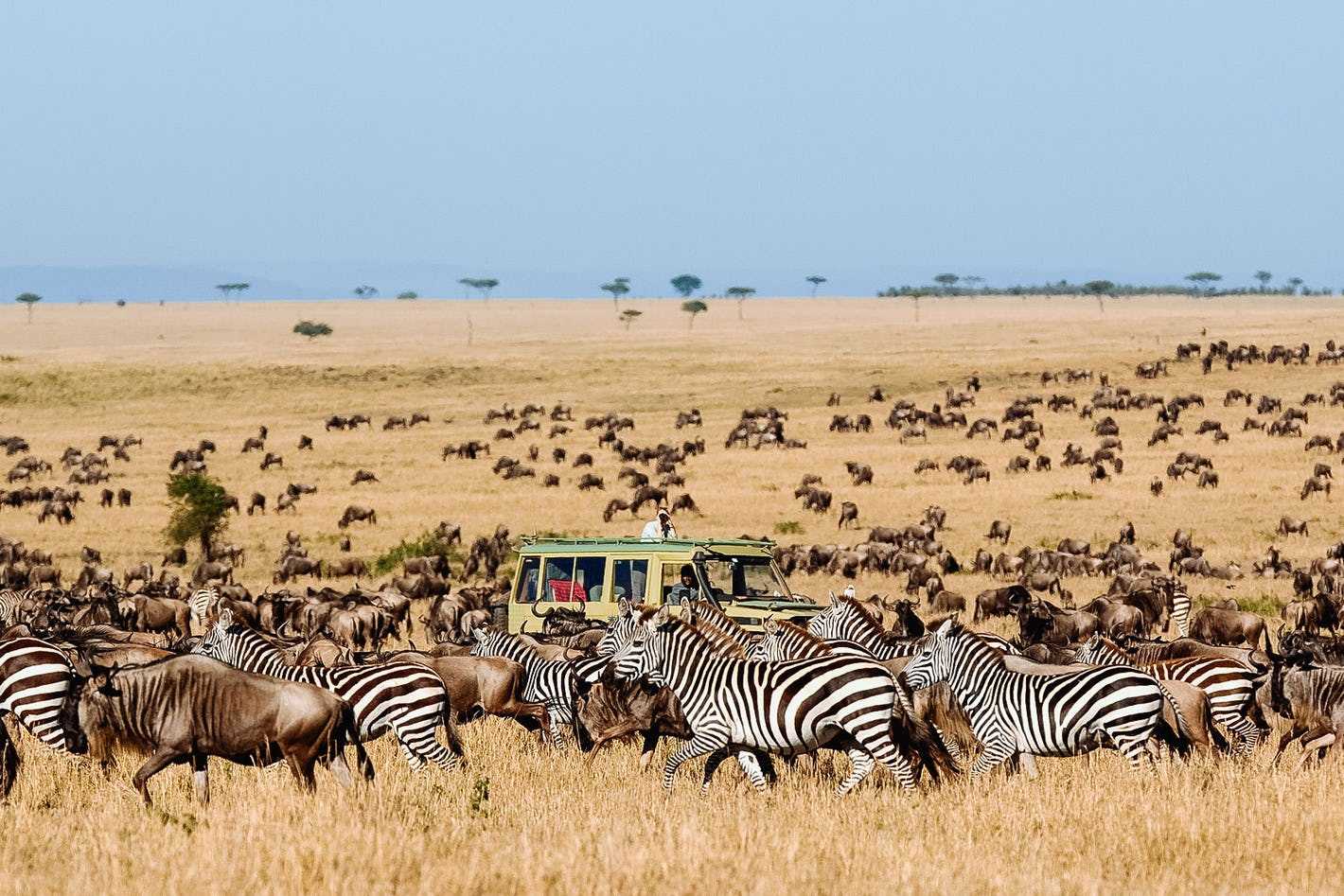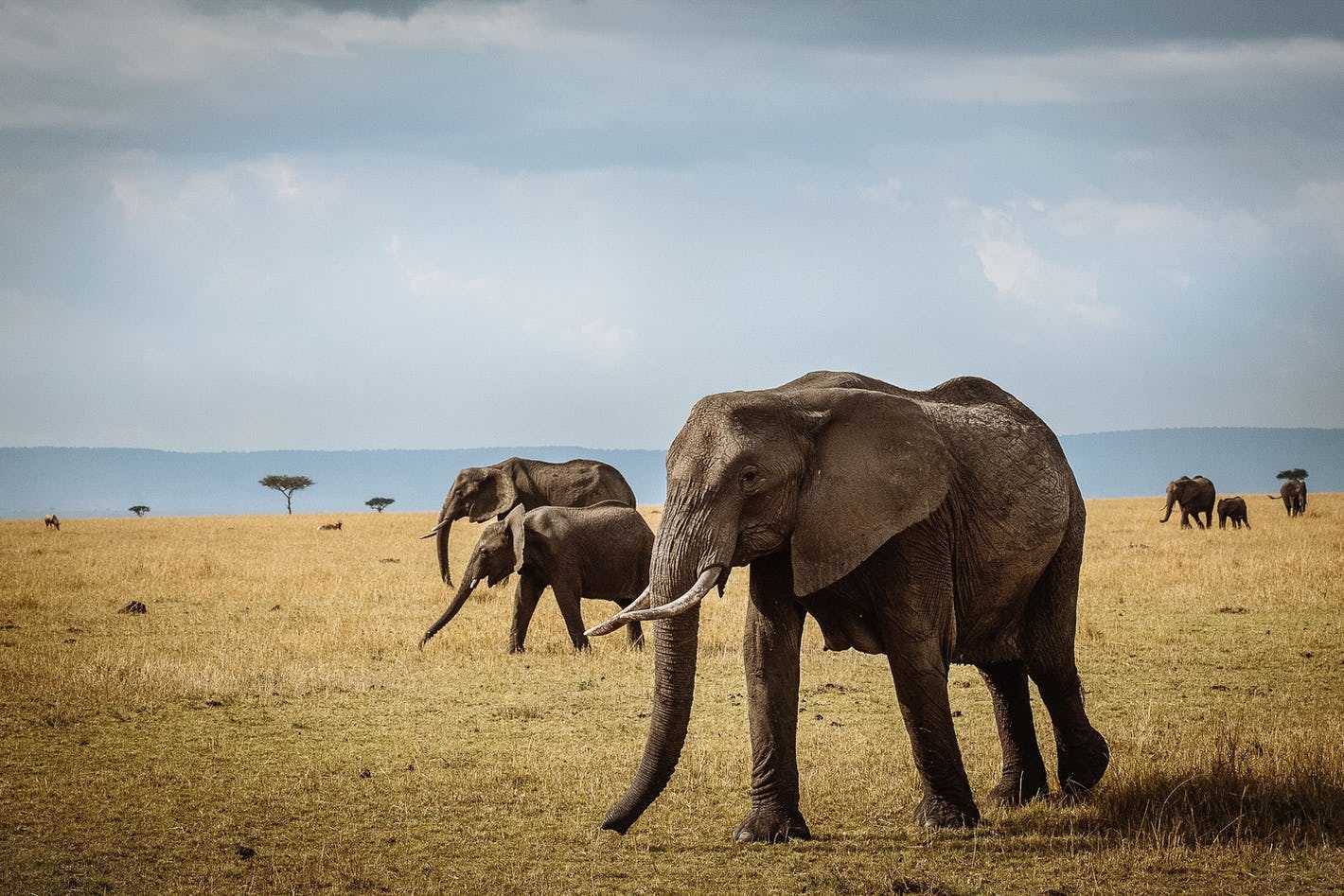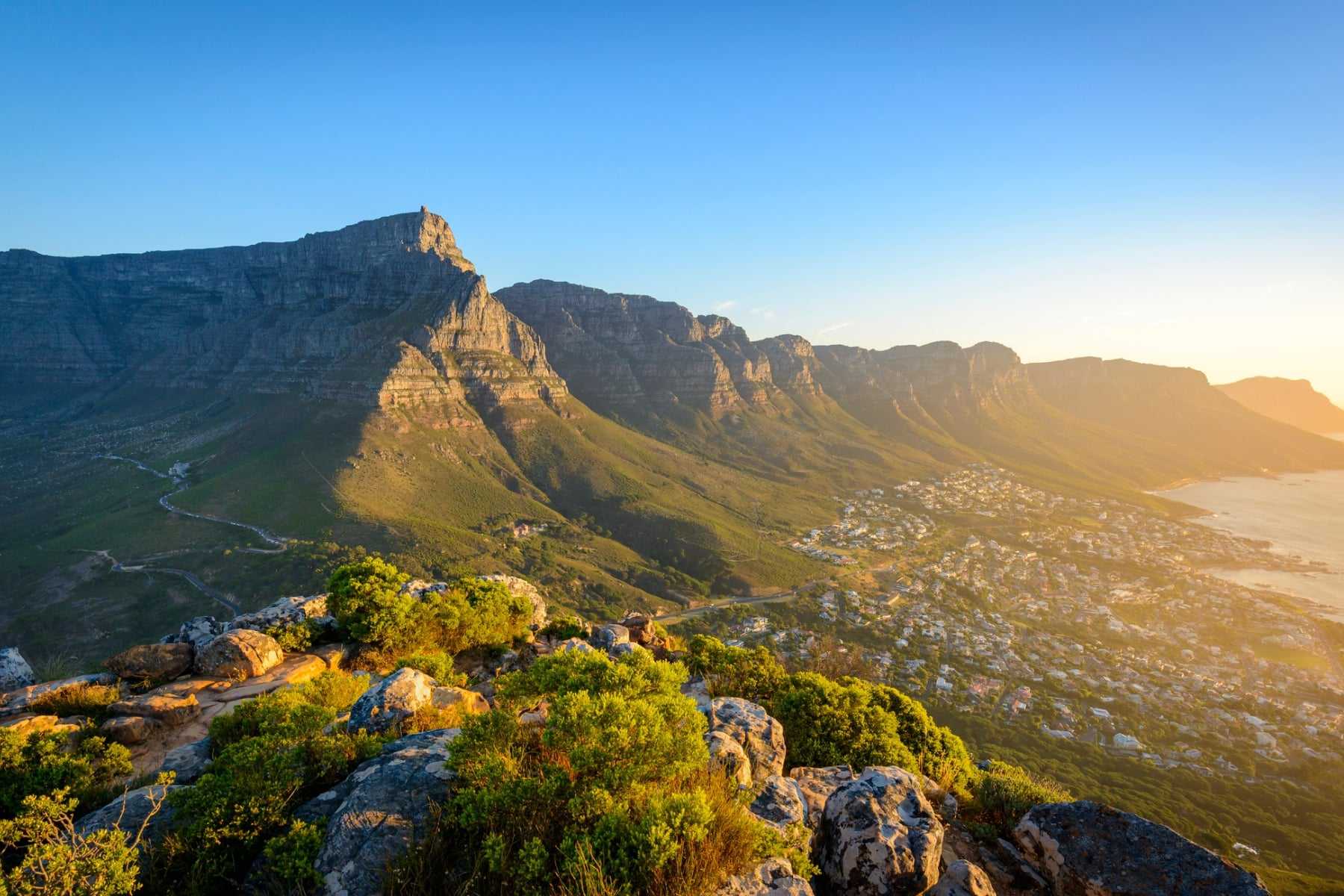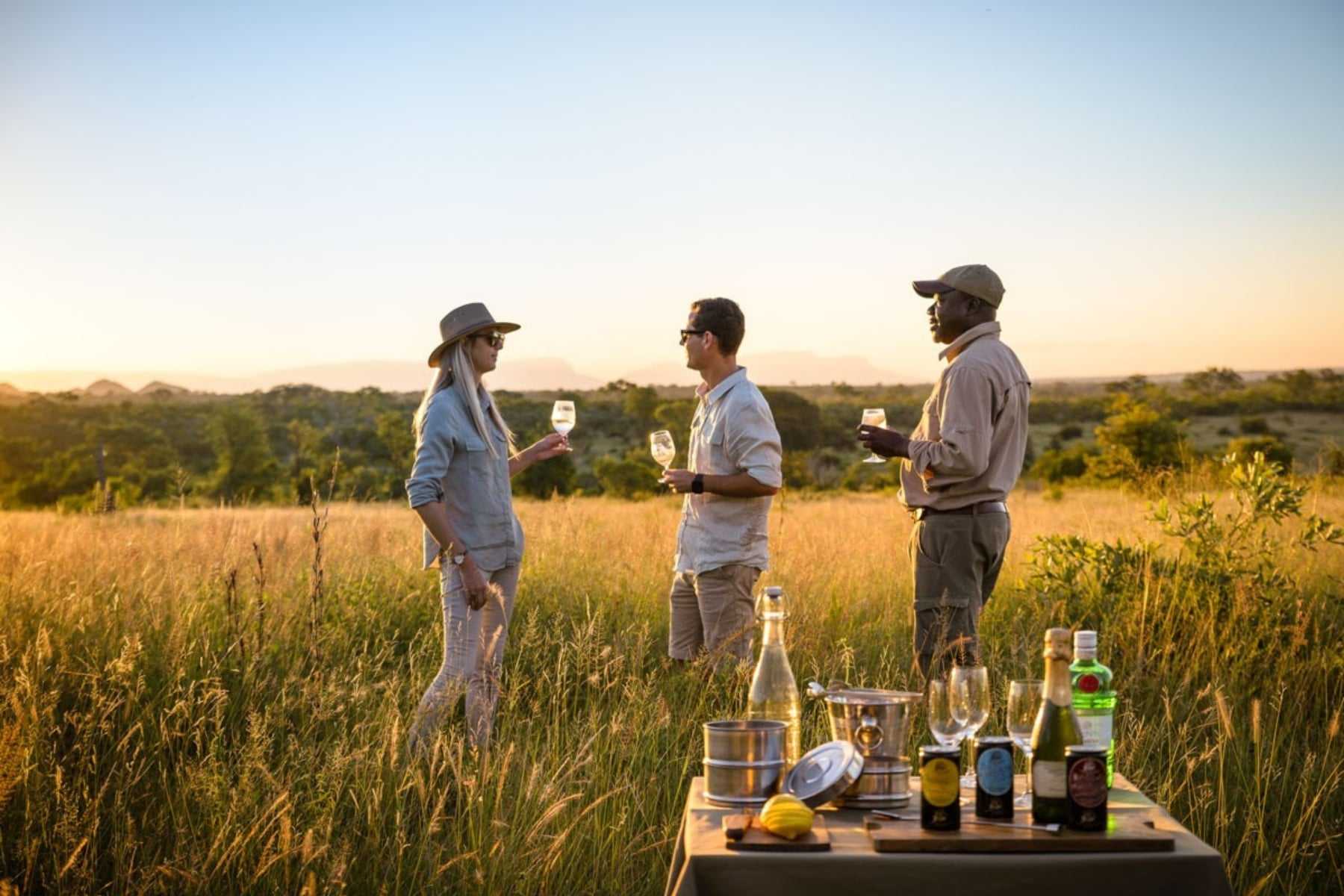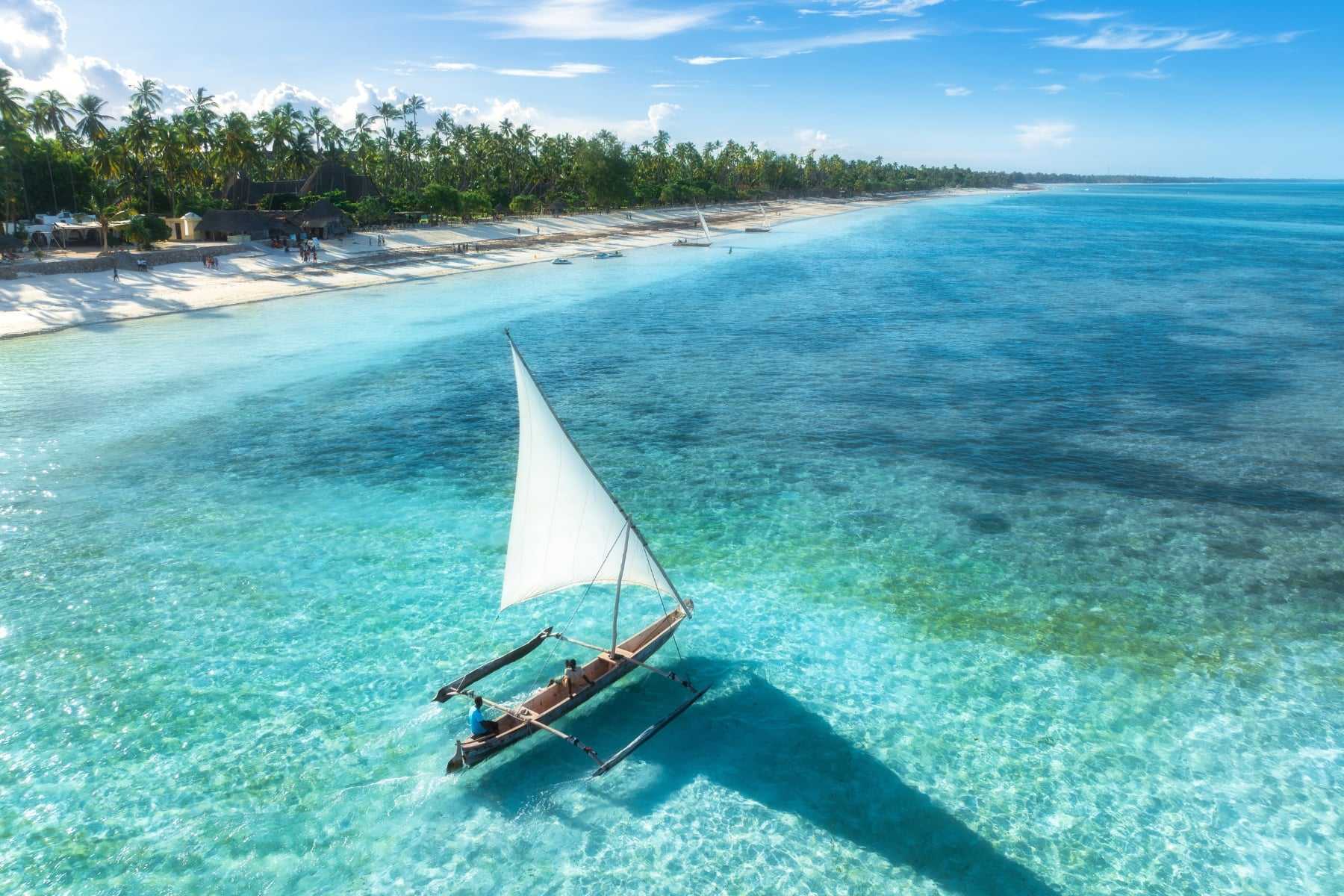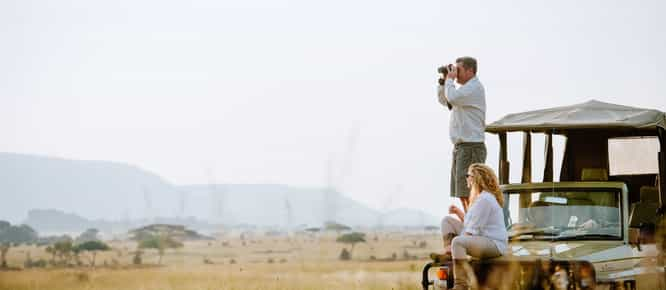If we had to pick one place that embodies the essence of safari, the Serengeti would have Timbuktu’s vote. The vast landscape covers over one million hectares of wilderness and plays host not only to some of Africa’s most incredible wildlife, but also some of the highest numbers. Perhaps the most famous is the Great Migration, which thunders its way across the Serengeti for more than half the year, pursued by the big cats – cheetah, lion and leopard – who provide a show of their own. Really, there’s not much that can beat a Serengeti safari and if it sounds like your cup of tea, take a look at our guide to get your bearings and start planning.
Getting started
Just about every camp in the Serengeti offers game drives, during which you’ll cover the highest amount of ground and likely see a catalogue of wildlife. Apart from a select few camps, off-roading, night drives and walking safaris aren’t available in the Serengeti. However, if you’re looking for something different, take to the sky in a hot air balloon – ask us when and how – or ride horseback alongside the Great Migration.
While the Serengeti’s bucket list-defining reputation precedes it, so does the price tag. A Serengeti safari may be expensive but it has a good excuse – everything from game drives to bush dinners tend to be included in the price. Not to mention, your dollars are fed into community and conservation projects that work to preserve this beautiful place.
Over the years, we’ve also picked up a tip or two for saving a few pennies without skimping on the experience. Staying in a more accessible area of the Serengeti, at least for a few nights, is often more affordable, with the Central Serengeti being the least expensive. While it may be tempting and time-saving to fly from place to place, the Serengeti’s layout makes it possible to drive between most safari and camp locations. And (bonus!) this often means a private guide and more time spent wildlife-spotting! Of course, any safari outside of peak season will result in a drop in the cost as well.
Breaking down the regions
Luckily, the Serengeti is split into manageable areas, each with their own distinctive highlights, which makes it easier to plan a Serengeti safari.
Southern Serengeti
After the previous year’s full-throttle migration from Tanzania to Kenya and back again, the wildebeest spend December to March enjoying the fresh shoots provided by the November rains. Should you choose to spend a few days in the southern Serengeti, February is a firm favourite as calving season is in full swing (there are around 500 000 calves born over 2 – 3 weeks) and the newborn wildebeest, zebra and antelope are amazing to see. As you might have guessed, this also means a glut of predators that wait in the grasses to pounce.
Where to stay
Olakira Migration Camp is a no-frills type of place that makes your Serengeti safari the priority. The migrating herds are all you can see for miles from your patio and on clear nights, roll your bed onto the mesh-lined patio and fall asleep beneath a starlit sky! The perfect combination of rustic and luxe, Legendary Mwiba Lodge is an easy favourite, with droves of wildlife (including the coveted Mwiba leopard) and the perks of being in a private reserve – no 4x4s cluttering up your view. This also means off-road driving, bush walks with a member of the Hadzabe tribe and night drives are all on the table.
Central Serengeti
In the heart of the Serengeti, the Migration makes an appearance twice a year, between May and June, and when they return from Kenya between November and December. In June, young wildebeest, zebra and antelope are finding their ‘migration’ legs and the herds flood the famous Moru Kopjes – a remarkable sight to say the least. The central Serengeti is also rich in wildlife throughout the year, and the rushing Seronera River and other waterholes attract animals for miles, including the iconic Big Five and endangered black rhino. It’s wise to keep in mind that this section of the Serengeti remains busy most of the year because of its accessibility. If it gets busy, escape to the eastern sector for the day. An exclusive little piece of the Serengeti known for its work in cheetah conservation, you’ll also spot impressive numbers of lion, leopard and hyena.
Where to stay
The rustic and eco-lite Kati Kati Tented Camp sits in the enviable Seronera area, where wildlife often wanders through camp. In the secluded eastern Serengeti, Namiri Plains Camp does safari-chic to a ‘T’ with sumptuous tented suites, outdoor bathtubs and plenty to see in the savannah that surrounds it. And the best bit? There is only a handful of lodges in the area, all miles apart from each other.
The Western Corridor
As with most of the Serengeti, the wildlife is plentiful, diverse and astonishing throughout the year. However, the Serengeti’s western region is unique as it marks the beginning of the Western Corridor, a highway of glorious landscapes and wildlife that stretches as far as Lake Victoria. This small but lush area is crossed by two rivers, the Mbalageti and the Grumeti, where the first round of river crossings take place for the Migration. Between May and June, stomping herds of wildebeest, zebra and plains game gather on the banks, bucking up their courage to brave the waters teeming with Nile crocodile.
Where to stay
Nestled beside the Grumeti River, every area at &Beyond’s tented camp capitalises on these views and their guides know just where to look for the Serengeti’s famous wildlife. Singita Explore is an exclusive-use mobile camp with vintage styling, pitched wherever you like and with a roster of activities arranged to your tastes.
Northern Serengeti
The north is where the Great Migration spends its final moments in the Serengeti before making the earth-shuddering crossing into the Masai Mara. To see this incredible clash of nature, head to Kogatende, or for a more quiet but no less exciting Serengeti safari, spend a day or two in the Lamai Wedge. This remote and mostly unexplored northern region has fewer lodges and a spectacular range of wildlife including the largest concentration of elephant in the Serengeti.
Where to stay
Perched in remote Kogatende, Nimali Mara has gorgeous, glass-sided tents and provides an all-eyes-on-the-Migration experience, placing you right in the midst of all the action! Add more than a little glamour to your Serengeti safari at Sayari Camp, where breathtaking views combine with stellar service – and it’s only minutes from the Mara River.
Serengeti safari highlights
Truthfully, every moment spent on a Serengeti safari could be called a highlight. However, it’s the Great Migration that draws thousands of travellers here every year. After birthing season, the million-strong herds of wildebeest, zebra, topi and gazelle begin their journey from the south of the Serengeti, across the golden plains, to its sprawling northern sector before making the run for their lives over the Mara River. At whichever point you join the Great Migration, you’ll see astonishing scenes of thunderous hooves and stalking lion contrasted with tiny newborns and grazing herds. The iconic River Crossings are another major drawcard, which begin in July and can be watched in the Serengeti’s northern region.
The migration aside, the Serengeti is a wildlife wonder throughout the year with every member of the Big Five present (although rhino are rare), and impressive numbers of lion and cheetah. The rivers are also a hotbed of activity, from the tenacious Nile crocodile and hippo, to the hundreds of species of birdlife.
Those in the know understand how rare it is to explore the Serengeti on foot and there are only a few chosen camps where walking safaris are offered. Watching a lion sniff the air, feeling the rumble of hooves, and hunkering down to examine the landscape in minute detail make them worth seeking out!
Choosing when to go
There’s rarely a bad time to find yourself in the Serengeti. Even in the rainiest months (March to April) when safari-ing becomes more of a gamble, you’ll still be pleasantly surprised. When it comes down to planning when to go on a Serengeti safari, it helps knowing what you want to see and how willing you are to share it with other travellers.
After the rains end, June marks the increase of wildlife densities and with shorter grasses, this is an ideal time for enjoying a walking safari (continuing until September). By July, the River Crossings have likely begun but you won’t be alone in the northern sectors so if you don’t mind skipping the spectacle at the river, head south for unrestricted wildlife viewing.
As the rains begin to fall again in November, the scenery becomes increasingly greener, colourful birdlife fills the air and the migrating herds have returned to the Serengeti to begin their journey south. This time of year is less expensive and less crowded than peak season, and there’s always plenty to see even if the wildlife is more dispersed.
Between January and March, most rainfall occurs in afternoon bursts, and the greener-than-green landscape and clouded skies make it an incredible time for photography. Calving season begins in February, offering some amazing kodak moments!
How to do it
If travelling by road, your Serengeti safari usually begins with a six-hour drive after an overnight stay in Arusha. The drive can be broken up with a night or two at Lake Manyara, Tarangire or the Ngorongoro Crater and if you’re heading to the western or northern regions, it’s best to spend a night in the central Serengeti en-route. To get the true bucket-list-fulfilling Serengeti experience, we recommend spending around three nights in two different sectors, with and without the Great Migration.
Natural instinct may tell you to add a few nights in the Masai Mara to your Serengeti safari and happily, it’s very easy to do so. You’ll fly from your nearest airstrip (there are 10 in the Serengeti) to Tanzania’s Tarime Airstrip, from which you’ll hop across the border to Migori on the Kenya side and fly to the most convenient airstrip for your next camp.
The Serengeti aside, there is so much to see in Tanzania, including the candyfloss flamingoes of Lake Manyara, the massive herds of elephant in Tarangire, and the lush, wildlife-rich world of the Ngorongoro Crater. For that all-important beach time, mosey down to the coast on a short flight to Zanzibar (dhow rides, history and snorkelling are a given), or for an added dose of adventure, visit the chimps of Rubondo Island and trek to find gorillas in Rwanda on this trip.
